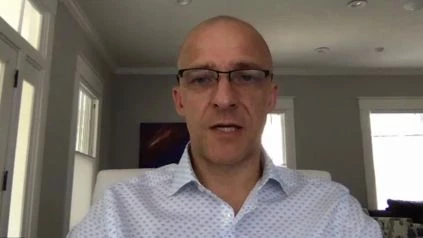Eric Jonasch, MD @MDAndersonNews #ASCO2020 gives an overview of the Phase II study of the oral HIF-2α inhibitor MK-6482 for Von Hippel-Lindau disease
Bottom line:
Von Hippel-Lindau disease (VHL) patients (pts) are at risk for multiple cancers including strong renal cell carcinoma (ccRCC). VHL inactivation results in constitutive activation of the transcription factor HIF-2α, which induces development of the tumors. In a phase 1/2 analysis, MK-6482, a potent, selective, small molecule inhibitor of HIF-2α, showed favorable safety and antitumor activity. For the treatment of VHL-associated ccRCC (NCT03401788), we present initial findings of the open-label phase 2 analysis on MK-6482.
Approaches:
Adult pts with a pathogenic VHL variation of the germline, detectable localized / nonmetastatic ccRCC, no previous systemic anticancer therapy, and 0/1 ECOG PS received MK-6482 120 mg orally once daily before development, intolerable toxicity, or withdrawal decision by the investigator. The primary endpoint was ORR by independent radiology analysis of VHL-associated ccRCC tumors per RECIST v1.1. Primary endpoints were DOR, reaction time (TTR), PFS, and protection and tolerability, respectively.
Analyses:
61 pts were enrolled as of December 6 , 2019; median (range) age was 41 years (19-66) and most pts were male (52.5 percent) and ECOG PS was 0 (82.0 percent). CNS hemangioblastomas (80.3 per cent) and pancreatic lesions (50.8 per cent) were the most common outside of the kidney (non-RCC tumors). The median period of treatment (range) was 9.9 mo (1.9-18.2) and 95.1 percent of the pts stayed on therapy. Discontinued three pts (AE, n = 1; death [toxicity to fentanyl], n = 1; judgment pt, n = 1). There were 17 confirmed responses (ORR, 27.9 percent [95 percent CI, 17.1-40.8 percent]) and 8 (13.1 percent) unconfirmed responses (documented at 1 point in time and to be verified at the following point in time); all responses were PRs. Of 61 pts, the size of target lesions decreased by 53 (86.9 per cent). The median (range) DOR was not reached in 17 pts with reported response (2.1-9.0 mo), and the median (range) TTR was 5.5 mo (2.7-14.0). Responses in CNS, retinal, and pancreatic lesions were also reported. The median PFS was not achieved; the PFS average of 12-mo was 98.3%. Treatment-related AEs (TRAEs) occurred in 96.7% of pts, mainly grade 1 (44.3%) or grade 2 (42.6%) and predominantly (20%) anemia (83.6%; deemed on-target toxicity), tiredness (49.2%) and dizziness (21.3%). Grade 3 TRAEs occurred in 9.8% of pts, mainly exhaustion (4.9%) and anaemia (3.3%). There were no 4th or 5th grade TRAEs. One pt stopped due to a TRAE (dizziness).
Conclusions:
MK-6482 demonstrated promising effectiveness and tolerability in VHL-associated ccRCC pts and responses in other VHL-associated lesions. These data help further analysis of VHL disease MK-6482. Details on clinical trials: NCT03401788.

